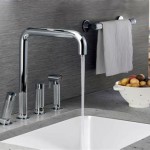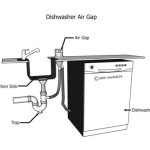Are you considering installing vinyl flooring in your kitchen? Vinyl flooring is a great choice for kitchen floors due to its durability, affordability, and ease of installation. In this comprehensive guide, we will discuss the different types of kitchen vinyl flooring, the benefits, and installation tips to help you make the right decision for your kitchen.
Types of Kitchen Vinyl Flooring
Kitchen vinyl flooring comes in a variety of styles, colors, and patterns. The most common types of vinyl flooring are sheet vinyl, luxury vinyl tile (LVT), and luxury vinyl plank (LVP). Each type of vinyl flooring has its own advantages and disadvantages, so it’s important to consider the pros and cons of each before making a decision.
- Sheet Vinyl: Sheet vinyl is a popular choice for kitchen floors due to its affordability and ease of installation. Sheet vinyl is a single sheet of vinyl material that is laid down in one piece. It is available in a variety of styles and patterns, and it can be customized to fit any size kitchen.
- Luxury Vinyl Tile (LVT): Luxury vinyl tile (LVT) is a popular choice for kitchen floors due to its durability and versatility. LVT is made up of individual tiles or planks that are installed one at a time. It is available in a variety of colors and patterns, and it is easy to customize and install.
- Luxury Vinyl Plank (LVP): Luxury vinyl plank (LVP) is another popular choice for kitchen floors. LVP is made up of individual planks that are installed one at a time. It is available in a variety of colors and patterns, and it is easy to customize and install.
Benefits of Kitchen Vinyl Flooring
Kitchen vinyl flooring has many benefits, including:
- Durability: Vinyl flooring is extremely durable and can withstand heavy foot traffic, spills, and stains.
- Affordability: Vinyl flooring is one of the most affordable flooring options, making it a great choice for budget-conscious homeowners.
- Easy Installation: Vinyl flooring is easy to install, so it is a great DIY project for homeowners.
- Easy Cleaning: Vinyl flooring is easy to clean and maintain, making it a great choice for busy households.
Installation Tips for Kitchen Vinyl Flooring
Installing kitchen vinyl flooring is not a difficult task, but there are a few tips to keep in mind to ensure a successful installation.
- Measure the Room: Before you purchase your vinyl flooring, it is important to measure the room to determine how much material you will need.
- Prepare the Floor: Before installing your vinyl flooring, it is important to prepare the floor by cleaning it and making any necessary repairs.
- Choose the Right Adhesive: Choosing the right adhesive is crucial for a successful installation. Make sure to read the manufacturer’s instructions to determine the best adhesive for your vinyl flooring.
- Allow for Expansion: Vinyl flooring can expand and contract due to temperature and humidity, so it is important to leave a small gap around the edges of the room to allow for this expansion.
Conclusion
Vinyl flooring is a great choice for kitchen floors due to its durability, affordability, and ease of installation. With the right preparation and installation tips, you can easily install vinyl flooring in your kitchen. This comprehensive guide should help you make an informed decision when choosing kitchen vinyl flooring.















Related Posts








